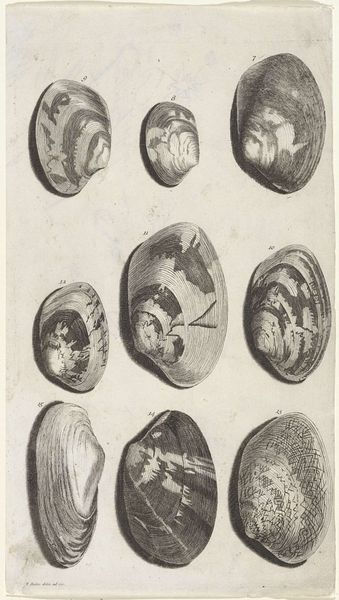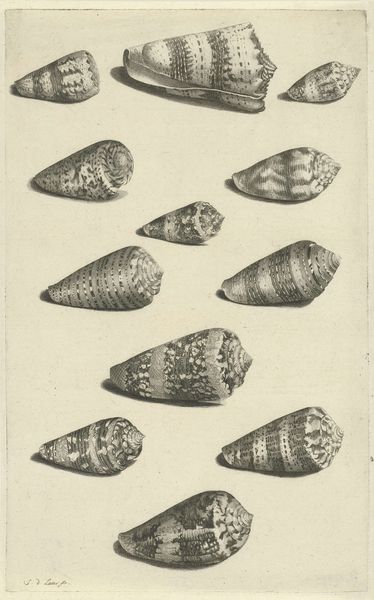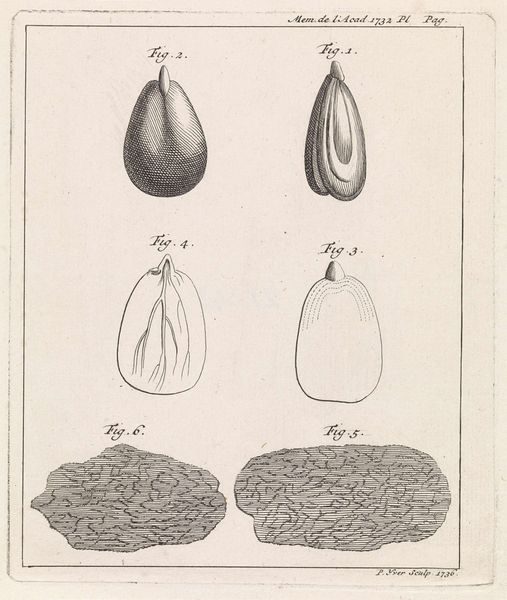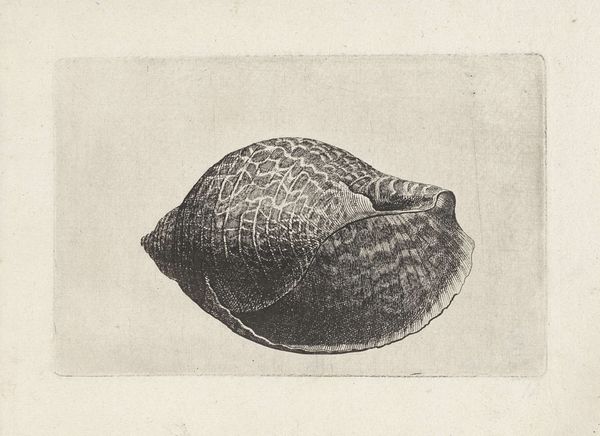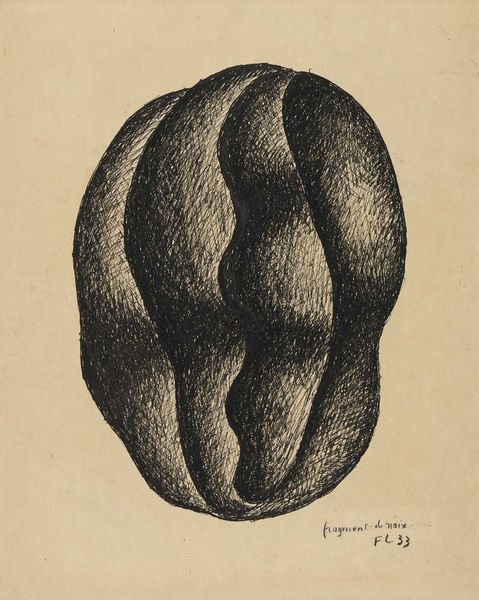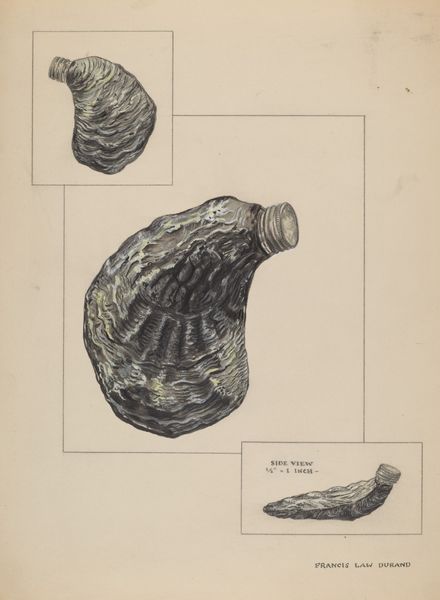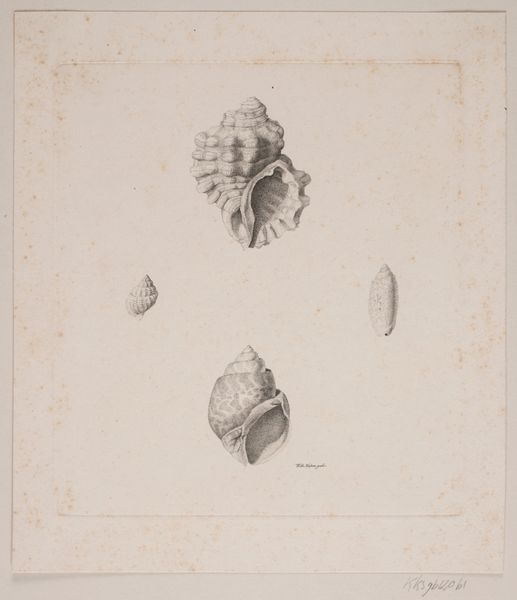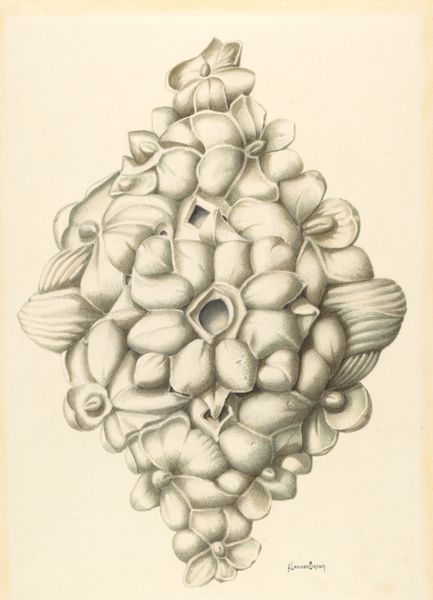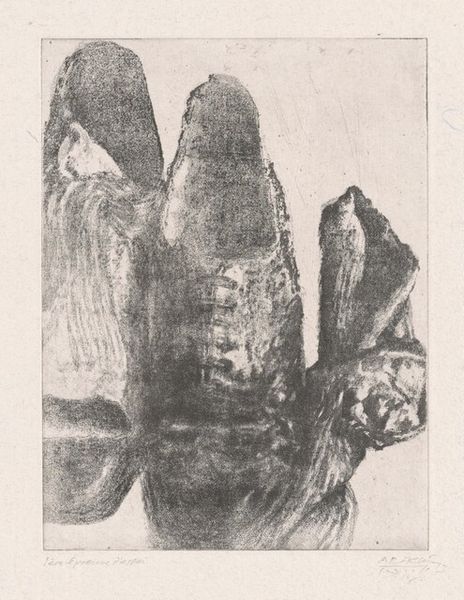
print, engraving
# print
#
engraving
#
realism
Dimensions: height 211 mm, width 147 mm
Copyright: Rijks Museum: Open Domain
Curator: Here at the Rijksmuseum we have “Vier kegelvormige schelpen” or “Four Cone-Shaped Shells," a print by Bernard Picart that experts believe was created sometime between 1683 and 1733. The print uses the engraving method, so what are your initial thoughts about it? Editor: These shells have such a quiet grandeur, don’t they? They’re arranged so simply, but there’s a lot of intricate detail that demands close attention. I'm getting an early naturalism vibe. A celebration of simple, organic forms. Curator: I think that observation is spot on. Picart was indeed known for his almost scientific approach to detail. It’s part of the realism movement and demonstrates a growing curiosity during this period to examine and catalog nature's beauty. Editor: I agree, these shells act like artifacts; windows into oceanic ecosystems but it's hard not to look at an image of shells and not think of how they can signify wealth. Curator: Oh, tell me more. Editor: In the Dutch Golden Age, collecting shells wasn't just a hobby, but a symbol of prosperity, a very conspicuous display of a certain access, you know? A connection between trade, power and global reach... so how are those stories layered into the work? How does a focus on individual items serve that colonial gaze? Curator: Yes, I understand that a great focus on realism also draws our attention back to the object itself. And so there's a sense that Picart isn't necessarily glorifying wealth directly here, but through capturing the specific details of these objects, it seems to invite questions about the nature of beauty and how these interests have changed. Editor: I also find myself thinking about climate change as I reflect on what these types of artworks mean now. It certainly highlights a deep tension: between scientific observation, collecting practices and today's eco-anxiety. Curator: A lot to think about indeed! Editor: Yes, certainly. This makes you ponder.
Comments
No comments
Be the first to comment and join the conversation on the ultimate creative platform.
